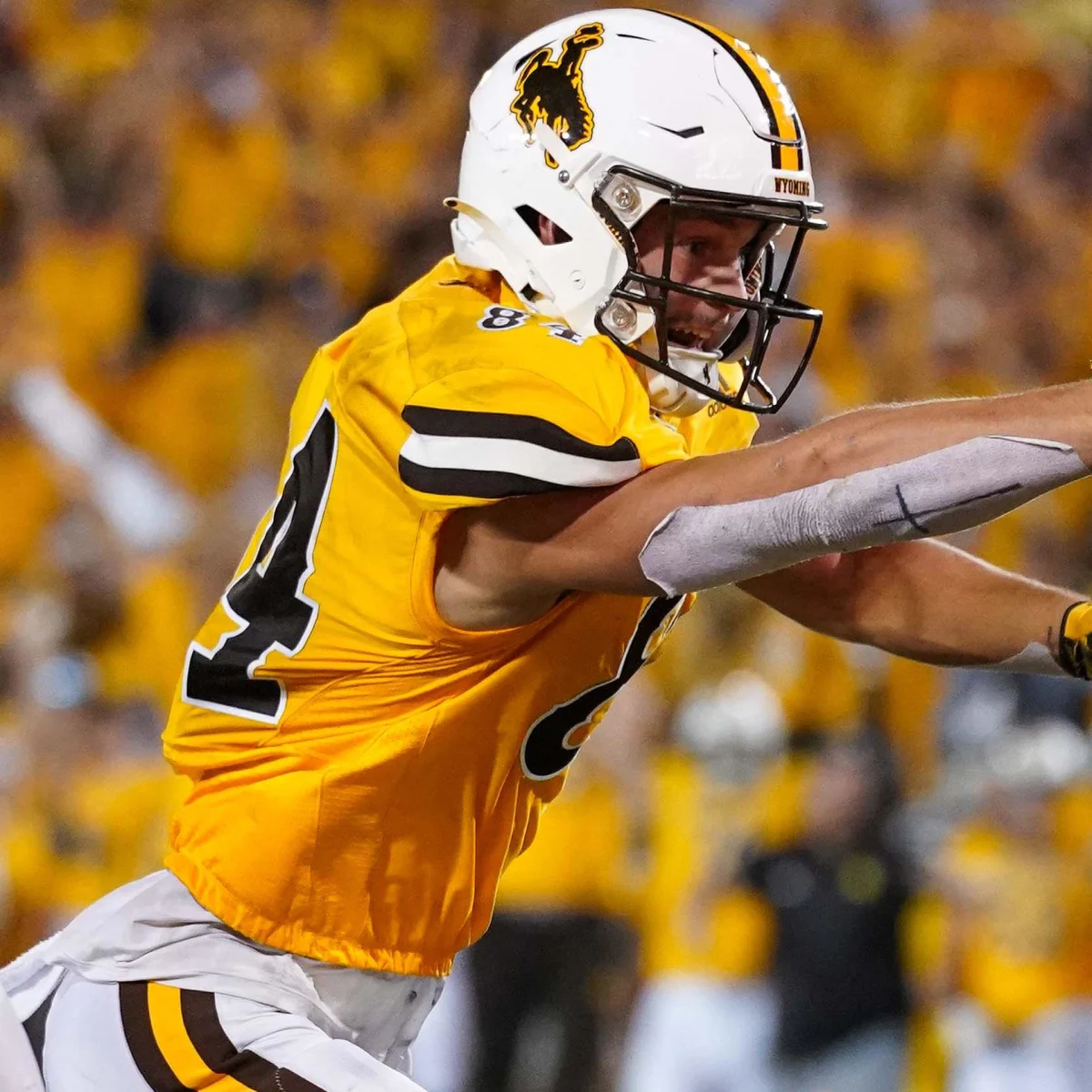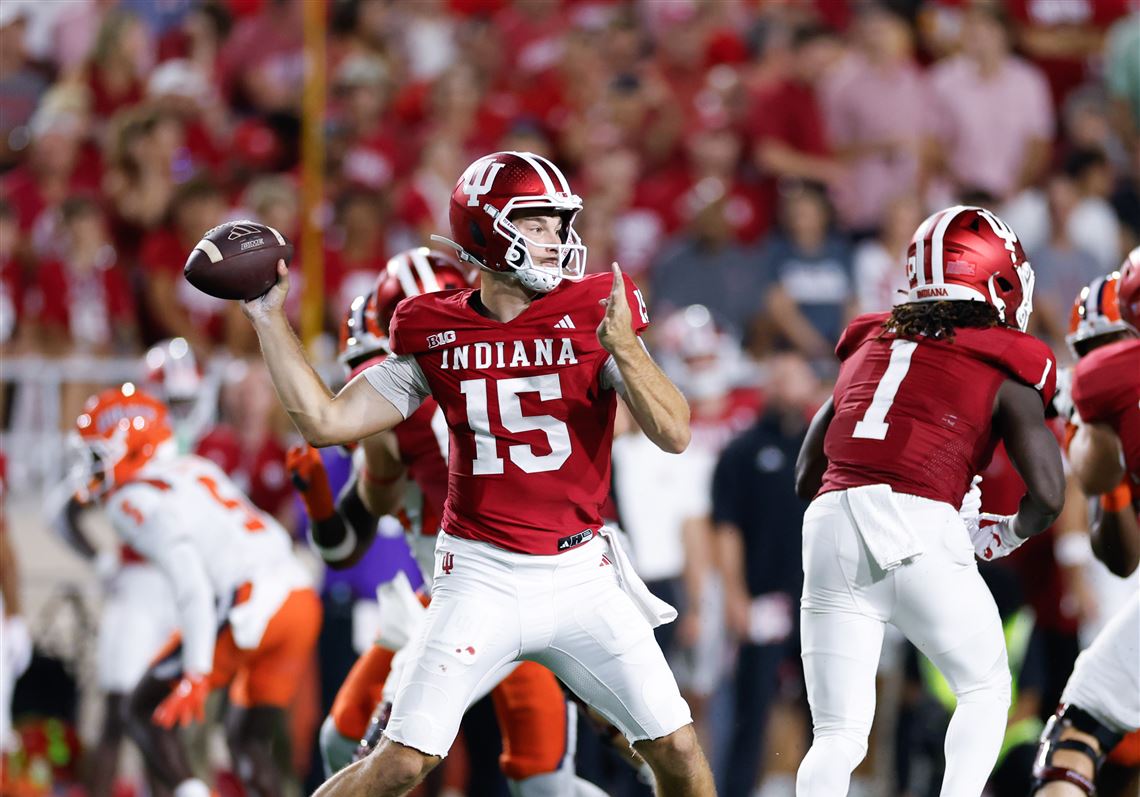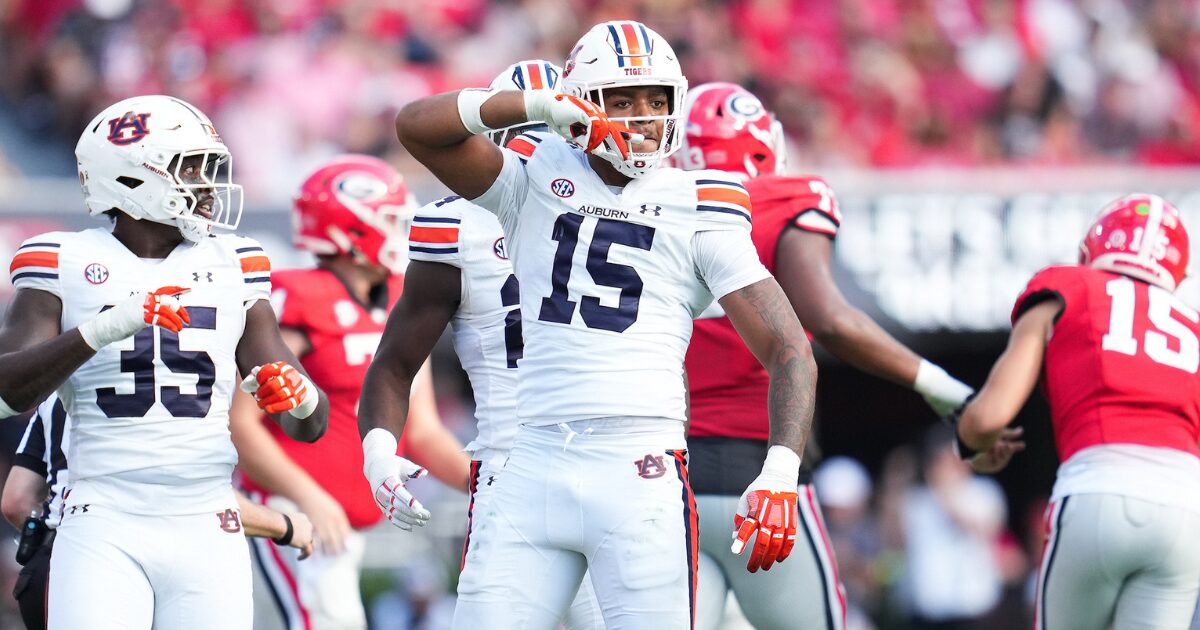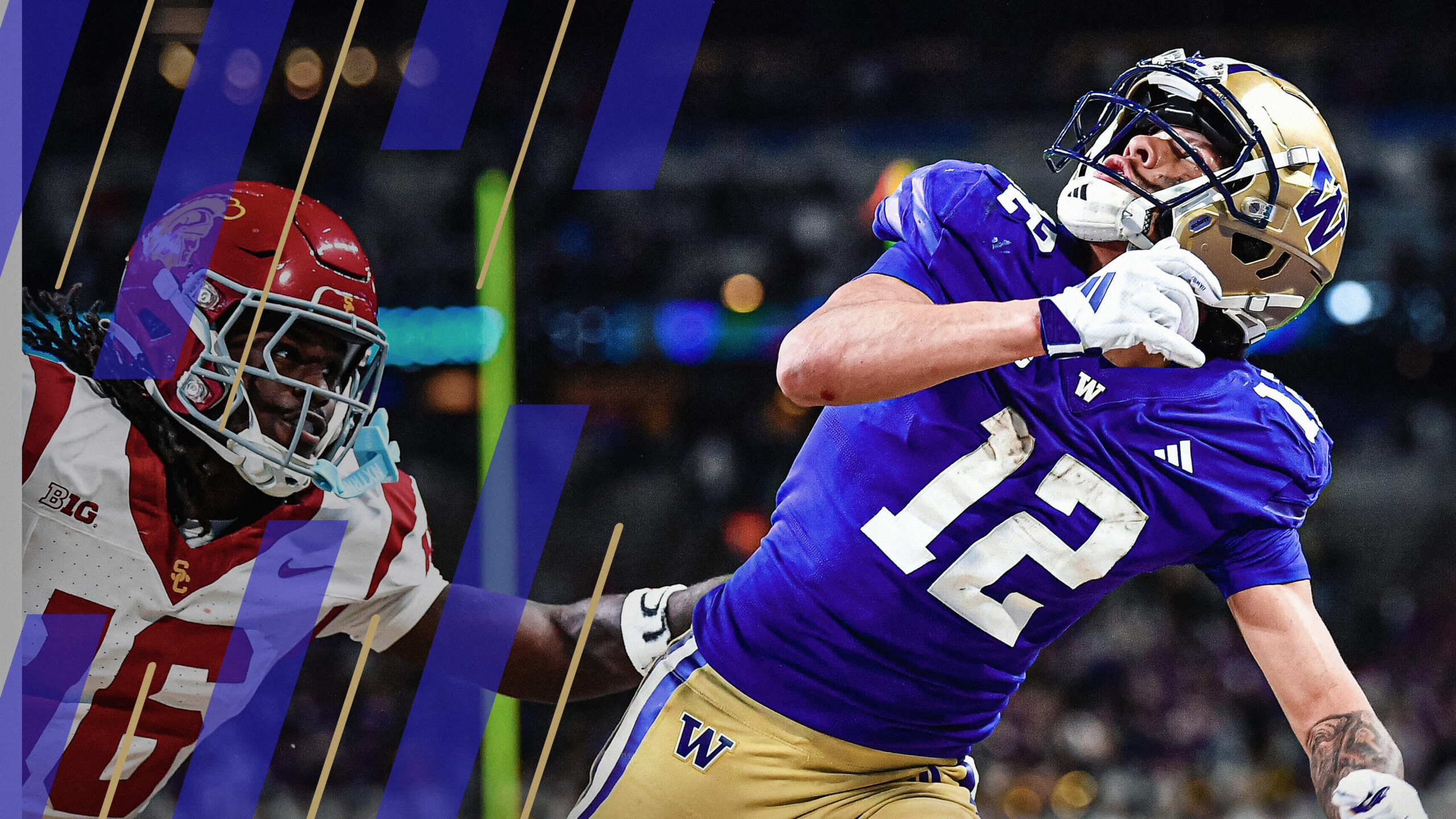By Charlie Campbell.
Send Charlie an e-mail here: [email protected]
Follow Charlie on Twitter @draftcampbell for updates.
This page was last updated April 16, 2021. Follow me @walterfootball for updates.
Position Review: Edge Defenders
Defensive End Class
Early-round talent: B
Mid-round: B
Late-round: D
Overall grade: B-
2021 prospects vs. 2020
Chase Young
Kwity Paye
Jaelan Phillips
K’Lavon Chaisson
Zaven Collins
Yetur Gross-Matos
Gregory Rousseau
Darrell Taylor
A.J. Epenesa
Jayson Oweh
Carlos Basham
Joe Tryon
Rashad Weaver
Julian Okwara
Zack Baun
Jabari Zuniga
Just to be clear this article and series is all my opinion based off my own study and information I’ve gotten from general managers, directors of college scouting, national scouts, area scouts, and NFL coaches who know way more than I do.
This is the third straight NFL draft that it is not an especially strong year for edge rushers, but it isn’t devoid of talent either. This year could offer a little more depth than last year, but there is no prospect who is even close to being as good as Chase Young was a year ago. Only two edge defenders went in the first round last year, with three more coming on Day 2. This year has more talent for Days 1 and 2 than last year did.
If you were to merge the two classes together, Chase Young would be the top prospect, with no other player in his ballpark. Kwity Paye and K’Lavon Chaisson are about equal as prospects. I think Jaelan Phillips is a better player than Chaisson coming out, but Phillips will probably go a little lower than Chaisson.
I think Zaven Collins is a better prospect than Yetur Gross-Matos, but I think Gross-Matos was a better prospect than Rousseau even though Rousseau will probably go in the first round, while Gross-Matos was a high second-rounder. Jayson Oweh could also go in the first round because of his skill set and workout warrior ability, but on the field with what he did at Penn State, he was not as good of a player as Taylor and Epenesa were in college. I think Carols Basham, Joe Tryon and Rashad Weaver were better prospects than Julian Okwara, Zack Baun and Jabari Zuniga were last year.
Safest Pick: Jaelan Phillips, Miami

Previous Picks:
2020: Chase Young
2019: Nick Bosa, Josh Allen
2018: Bradley Chubb, Tremaine Edmunds
2017: Myles Garrett
2016: Joey Bosa, DeForest Buckner
2015: Dante Fowler
2014: Jadeveon Clowney
2013: Bjoern Werner, Dion Jordan
Looking back at the previous picks, I’m pretty strong. All of the players panned out except for the 2013 tandem in that horrible draft class that saw many first-round busts.
This was an easy choice as I am higher on Phillips than others. The 6-foot-5, 266-pounder was excellent for Miami last year. He showed speed and explosion as a pass rusher, was tough and fought hard in the ground game, and got better week-by-week while becoming an emotional leader for Miami. Phillips has a ton of athletic upside and I think he is only going to get better as he gains experience. It would not shock me if Phillips goes in the 20s and ends up being a steal for his NFL team.
Biggest Bust Potential: Gregory Rousseau, Miami

Previous Picks:
2020: Terrell Lewis
2019: Jachai Polite
2018: Arden Key, Lorenzo Carter
2017: Takk McKinley
2016: Kevin Dodd, Noah Spence
2015: Owa Odighizuwa, Randy Gregory
2014: Kareem Martin, Dee Ford
2013: Barkevious Mingo
Overall, I have a good track record here, with none of these players turning into a good pro.
I chose Rousseau for a variety of reasons. In a survey of team sources, Rousseau’s name came back more than any other player as the most overhyped and overrated player in the 2021 NFL Draft. A number of team sources think Rousseau is going to be a bust. Some teams have him graded in the second or third round, but Rousseau looks likely to be selected in Round 1.
Rousseau is not an explosive, fast edge rusher, and he also lacks physicality. He is going to have to become a power player in the NFL, and I’m not sure he will develop into one. Rousseau also is a 1-year wonder who sat out the 2020 season, losing a year of development at improving his pass-rushing moves, taking on and shedding blocks, sharpening read-and-react skills, and playing against a variety of opponents. He also had one serious season-ending leg injury during his college career. I would not be at all surprised if Rousseau is a bust.
Edge Defender Rankings by Attributes
Pass Rush:
NFL prototype: T.J. Watt, Steelers
- Kwity Paye
- Jaelan Phillips
- Gregory Rousseau
- Carlos Basham
- Jayson Oweh
- Joe Tryon
- Zaven Collins
- Rashad Weaver
Recap: The NFL is a passing-driven league, and coaches will tell you that an elite pass-rusher is the most important position on the defensive side of the ball. Unless a team has a defensive tackle like the Rams’ Aaron Donald, it has to have edge rushers who can consistently pressure the quarterback.
As a pass rusher, Paye is a fast defender who fires into the backfield and closes on the quarterback in a hurry. Paye has the speed to fire off the ball and the ability to sink his hips to get underneath tackles as he runs the loop around the corner. For a player of Paye’s size, his closing speed and ability to pursue scrambling quarterbacks are very impressive given his athleticism to redirect in space. Paye has functional strength and can use his hands and feet at the same time to shed blocks, utlizing a hand chop to slap blockers away while moving around them. With his good size and strength, Paye is a dangerous weapon who can move inside to tackle in the sub package.
Phillips is not a pure speed demon off the edge as a pass rusher, but he is a versatile defender. Phillips has an excellent move to the inside and the functional strength for a swim move to dart to the inside of tackles plus a burst to close on the quarterback in a hurry. Phillips shows good strength and leverage to bull rush his way into the pocket. He also has active hands and uses them at the same time with his feet. Thanks to his length, strength, and good hands, Phillips is adept at shedding blocks and putting pressure on the quarterback. He shows nice vision, instincts, and an ability to redirect to chase down moving quarterbacks.
Rousseau was very good pass rusher in college, but for the NFL, he lacks explosion and is not a speed rusher. He is a bit of a one-trick pony for the next level as a pass rusher because he relies on his length to make up for not being a fast defensive end. He is not going to blow by pro tackles; he simply lacks the burst to run by them. What made Rousseau effective in 2019 was his length. His long arms kept blockers away, and he made the most of sack opportunities. However in the NFL, offensive tackles have more length and he won’t be able to live on just being a long defender. In 2019, he showed an ability to use his hands and feet at the same time while also keeping his eyes on the quarterback. Rousseau showed an effective bull rush, a rip move, and the length to get off blocks, but against pro tackles, he will need to get stronger for those moves to be effective.
In 2019, Basham was a steady pass-rushing presence who came through with some clutch plays for Wake Forest. While Basham has a big and strong frame, he is quicker than one would think from the eyeball test. He shows active hands to fight off blockers and a repertoire of moves, including a rip and spin to go along with bull rushes and cuts to the inside. Basham possesses nice vision to keep his eyes on the quarterback while using his hands and feet at the same time to work off blocks. When Basham gets free, he shows a burst to close and impressive pursuit skills for a big defensive end. Another added value that Basham brings in the pass rush is the ability to move inside to tackle in the sub package. Basham just lacks speed and explosion for the NFL, but he could still find ways to contribute.
Oweh has the speed and strength to be a tough battle for NFL offensive tackles. Oweh would be a star of the “all-looks” team with his body type and his carved-up physique that could be featured on a muscle fitness magazine. As a pass rusher, Oweh can burn tackles with a speed and also is strong enough to fight them off with his hands. He uses his hands and feet at the same as well, showing the ability to translate speed to power and the agility to redirect to the inside or sink his hips while running the loop on the outside. Oweh could use more refinement with his pass-rushing moves, but he has the potential to be a good pass rusher in the NFL. However, he had only four sacks over his last 18 games of college, including zero in 2020. Oweh struggled to produce up to his skill set.
As a pass rusher, Tryon has talent for the next level with a good combination of height, length, and speed off the edge. He possesses a good get-off that lets him fire off the ball and get upfield. Tryon is skilled at actively using his hands and feet at the same time while keeping his eyes on the quarterback. Tryon shows a nice variety in pass-rushing moves, using an arm over pr a spin move, and he sets up tackles well to cut to the inside or outside. Tryon thrives off of space, and when he gets free, he flashes real pursuit skills with speed to close quickly. Tryon needs more refinement for the NFL, but that is understandable considering he has only one year of playing time. That being said, Tryon needs to continue to develop his pass-rushing moves and make them more effective. When Tryon breaks free, he eats up space quickly with his speed and closes well on the quarterback, but getting off blocks is his biggest point of improvement for the next level.
Collins can rush off the edge, showing speed to blow by offensive tackles and close on the quarterback in a hurry. He is agile to dodge blockers and uses his length to shed blocks. In the NFL, Collins could fit as a 3-4 outside linebacker who rushes the quarterback on a consistent basis. He will need refinement with his moves, but the physical talent is there for Collins to grow.
Weaver had two productive years getting after the quarterback for Pittsburgh. He used his strength and length to push off tackles and heavy hands to rock them off balance. However for the NFL, Weaver lacks the ability to bend, as he is very stiff and he is not fast off the edge to challenge pro tackles with speed. Hence, he is more of a five-technique for a 3-4 defense who can contribute some in the pass rush, but he won’t be consistent sack producer.
Run Defense:
NFL prototype: Jadeveon Clowney, Browns
- Carlos Basham
- Jaelan Phillips
- Rashad Weaver
- Kwity Paye
- Gregory Rousseau
- Jayson Oweh
- Zaven Collins
- Joe Tryon
Recap: Defending the run isn’t as in demand as it used to be with NFL coaches, but they still watch it closely when evaluating prospects and teams need some tough run defenders at the point of attack. This class features four good run defenders.
In the ground game, Basham is gap sound and strong at the point of attack. He can stand up offensive linemen and hold his ground when runs come downhill at him. With his surprising burst to close, Basham does a nice job of flowing down the line to make tackles after shedding blocks. He is a well-balanced defender who should be an asset in the ground game as a pro.
Phillips is very good in run defense, as he is strong to set the edge and holds his ground against downhill runs. Phillips uses his strong hands, length, and strength to shed blocks to chase down backs for tackles. With his burst, Phillips is dangerous to get upfield and blow up runs in the backfield. He is a well-rounded player who will be an asset as a run defender in the NFL.
Weaver is strong to set the edge at the point of attack. He uses his long frame and strong hands to hold his gap when runs come downhill straight at him. With his size and strength combination, Weaver shows the ability to play some two-gap potential, holding his ground and eating up blocks. Due to limited agility and speed, Weaver won’t be a defender who moves around and makes blocks down the line.
In the ground game, Paye is a solid defender. He has the strength to hold his gap and not get blown off the ball. He gives a good effort and will pursue to the ball. At times in college, he got covered up some, but given his lack of experience, that isn’t shocking. Paye’s strong frame and good size should let him turn into a good run defender in the NFL after he gains more experience and develops from pro coaches.
In run defense, Rousseau is solid and is at his best when he works upfield to cause disruption in the backfield. Rousseau has the potential to develop into a pro defender who can hold his gap to stop the run. For the NFL, it would help him to get stronger, and that would improve his ability to defend downhill runs coming straight at him. Rousseau is young, so he has the time and frame to add strength. As stated above, he needs to get stronger and become more physical. Morphing into a power player could make up for his lack of speed.
Oweh is a decent run defender considering he weighs less than 260 pounds. His weight room strength keeps him from getting pushed around, and he flashes the ability to get off blocks and flow to the ball carrier. If he’s drafted into a 4-3 defense, it could make sense to rotate him a fair amount in the ground game, as offensive tackles who have a 50-70-pound advantage could wear him out over four quarters.
In the ground game, Collins uses his length to get off blocks and is a good pursuit defender. Some teams, however, are knocking him because he is not a physical defender to take on blocks from guards and offensive tackles. They also say he is not a forceful tackler and needs to improve in that regard to avoid broken tackles on pro running backs.
Tryon needs to improve as a run defender for the NFL. He can get pushed backward in the ground game, as offensive linemen get under his pads and ride him around at times. Like many tall defenders, Tryon gets in trouble when he stands up too high. He needs to play with better leverage and stay lower to make him more stout as a run defender. Tryon also needs to improve his ability to shed blocks so he can use his pursuit skills to get to the ball-carrier.
Motor:
NFL prototype: J.J. Watt, Cardinals
- Kwity Paye
- Jaelan Phillips
- Zaven Collins
- Jayson Oweh
- Carlos Basham
- Rashad Weaver
- Gregory Rousseau
- Joe Tryon
Recap: Prospects who show a lack of effort can get knocked quickly by coaches when they start evaluating players. Coaches have zero patience for players who dog it. Conversely, a great motor will help players who may be short on athletic ability. This draft class has a lot of good motors amongst the early-round prospects, and there isn’t a player in the group who I would say has a bad motor.
Paye was relentless in the pass rush, and he was able to create some sacks off of a second effort, aided by his great physical talent. Phillips has an excellent motor, and you never saw him taking plays off. Ditto for Collins and Oweh, as they never quit on a play and go through the whistle. Those four all really stand out for having good motors.
Basham showed good effort over 2020 and 2019. His final season was hurt somewhat by Wake Forest struggling and offenses accounting for him, but overall, he gives a good effort on a down-by-down basis.
Weaver, Rousseau and Tryon all give quality effort. None of them are slackers, but they all can have stretches where they can go quiet.
Forcing Fumbles:
NFL prototype: Chandler Jones, Cardinals
- Rashad Weaver
- Carlos Basham
- Zaven Collins
- Jayson Oweh
- Gregory Rousseau
- Joe Tryon
- Kwity Paye
- Jaelan Phillips
Recap: The art of a strip sack is a great equalizer in the NFL. Strip sacks can change games and have a big impact on the scoreboard. Overall, this group did not impress in this category, aside from Weaver with Basham being a close second. Over the past two seasons, Weaver produced five forced fumbles and showed good instincts to go for the ball. Basham had four forced fumbles over the two past seasons, and he was cognizant to go for the strip-sack.
Collins notched two forced fumbles at Tulsa and came close to more. He is aware to go for the strip when he gets close to the quarterback, and he had fewer opportunities because he also dropped into pass coverage consistently.
Rousseau recorded two forced fumbles in 2019, which is not bad, but considering he had 15 sacks, it isn’t all that impressive. Tryon, Paye and Phillips did not create forced fumbles in college.
Strength:
NFL prototype: J.J. Watt, Cardinals
- Rashad Weaver
- Carlos Basham
- Kwity Paye
- Jaelan Phillips
- Jayson Oweh
- Gregory Rousseau
- Joe Tryon
- Zaven Collins
Recap: Weaver is a blue-collar-type of player who is very strong at the point of attack. He can get physical and push offensive lineman around thanks to his developed upper body and heavy hands that are ready for the next level.
Basham and Paye already have NFL-level strength with shock in their hands to disengage from blocks. They both are thick ends who could top out around 280 pounds as pros and possess serious upper body strength to hold their ground against downhill blocks. Both Basham and Paye are strong and set a physical edge with the ability to move inside to tackle in the sub package.
Phillips is strong enough to not get pushed around. He the strength to function, and that should only improve as he develops in a pro strength and conditioning program. Oweh’s weight room strength keeps him from getting pushed around, and he flashes the ability to get off blocks
Rousseau and Tryon have to get stronger for the NFL. That is a must for both of them because neither one is a Von Miller or Chase Young speed demon off the edge. If Rousseau and Tryon don’t get stronger, they probably won’t become effective starters.
Collins needs to get stronger for taking on and shedding blocks in the NFL. He also needs to become a more forceful and violent tackler to take on pro running backs.
Versatility:
NFL prototype: Chandler Jones, Cardinals
- Zaven Collins
- Kwity Paye
- Jaelan Phillips
- Jayson Oweh
- Gregory Rousseau
- Joe Tryon
- Carlos Basham
- Rashad Weaver
Recap: Defensive coordinators love versatility. Edge defenders who can drop into coverage and play in space are in demand. Coaches also like defensive ends who can move inside to defensive tackle on passing downs. This class of edge-rushers features a lot of versatility as a group.
Collins is the most versatile defender of this group by a landslide, as he could play a lot of different positions in the NFL. The 6-foot-4, 260-pounder has the size to play in multiple spots due to his with speed and athleticism. Scouts feel he could be a 4-3 Sam linebacker or Mike – middle – linebacker while also being a great fit as an outside linebacker in a 3-4 defense. Collins could also play some inside linebacker in a 3-4 once gets better at taking on blocks. At his size, he could be a 4-3 defensive end in the sub package.
In 2020 for Tulsa, Collins showed explosive speed, athleticism, an ability to cover, and play in space while dropping into pass coverage. He can cover a lot of ground in zone coverage while also helping to pick up tight ends and running backs. Collins has rare and special versatility.
Paye has versatility such that he could be a 3-4 outside linebacker, a 4-3 defensive end, and he could even rush some from the inside in the sub package. He is a good fit for any NFL defense.
Phillips, Oweh, Rousseau and Tryon could play end in a 4-3 defense or fit as 3-4 outside linebackers. Basham is a good fit for playing 4-3 base end, and he could end up as a five-technique end in a 3-4. He also could move inside to tackle in a 4-3 sub package. Being a 3-4 end could be the best fit for Weaver. He also could play 4-3 base end.
NFL Power Rankings - Dec. 23
NFL Picks - Dec. 22
2026 NFL Mock Draft - Dec. 17
Fantasy Football Rankings - Sept. 1




